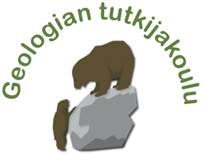Tapani Rämö
Ph.D., professor
Field: rapakivi granites
Phone: +358-9-191-50810
tapani.ramo@helsinki.fi
Arto Luttinen
Ph.D., docent
(Finnish Museum of Natural History)
Field: flood basalts
Phone: +358-9-191-28745
arto.luttinen@helsinki.fi
Jussi Heinonen
M.Sc., doctoral candidate
Field: ferropicrites
Phone: +358-9-191-50802
jussi.s.heinonen@helsinki.fi
Ilona Romu
M.Sc., doctoral candidate
Field: alkaline rocks and crustal xenoliths
Phone: +358-9-191-50841
ilona.romu@helsinki.fi
Matti Kurhila
M.Sc., doctoral candidate
Field: U-Pb and Ar-Ar dating
Phone: +358-9-191-50809
matti.kurhila@helsinki.fi
Elina Lehtonen
graduate student
Field: LA-ICP-MS -mineral analytics
elina.lehtonen@helsinki.fi





Background
What is anorogenic magmatism?

Why Dronning Maud Land?
The oldest anorogenic igneous rocks of Dronning Maud Land are over 1000 million years old and are related to the dispersal of an ancient Rodinia supercontinent, which preceded the formation of Gondwana. These rocks have largely eroded away, however, and only the crystallized magma chambers of ancient giant volcanoes, rapakivi-granites (Figure 4), remind us from anorogenic events of those times.
Largest anorogenic eruptions had a significant impact on the climate and biosphere and the subsequent evolution of the planet’s surface to its present state. But how is it possible to generate such vast amounts of magma in general? What kind of mantle materials were the initial sources for the melts, and at what depths and temperatures?

Finnish geologists in Antarctica
Geological studies have concentrated on the ~180 million-year-old remnants of the Karoo CFBs (Figure 3) and related dike and plutonic rocks (Figure 7). Vestfjella hosts a versatile collection of distinctly evolved flood basalts and some of the most extraordinary Karoo-related rock types, ferropicrites, which have avoided lithospheric contamination and provide direct geochemical information from the ultimate sources of the CFBs (Figure 8). Rare alkaline dike rocks, which are reminiscent of the kimberlites of South-Africa, contain crustal xenoliths that were picked up by the host magmas during their rapid journey towards the Earth’s surface (Figure 9). These xenoliths have led us to the secrets of the Precambrian basement, over billion years into the origins of the Rodinia supercontinent. The rapakivi-granites (Figure 4) that are related to the break-up of Rodinia have also been the subject of our research.
The foundations of our research have been built on broad international collaboration and the utilization of up-to-date geochemical and geochronological analyzing methods (Figure 10). The research is funded by the Academy of Finland and the Finnish Graduate School in Geology. Our studies at Dronning Maud Land have resulted in two Doctoral theses (two in preparation) and six Master’s theses (two in preparation) so far. Results have been published in several focal international journals of the field (see Publications).

